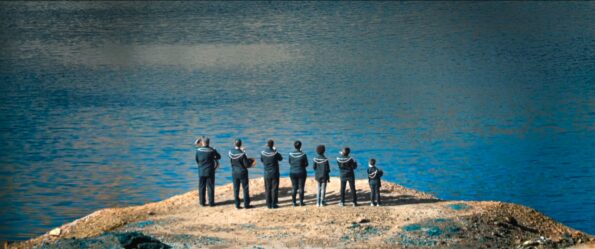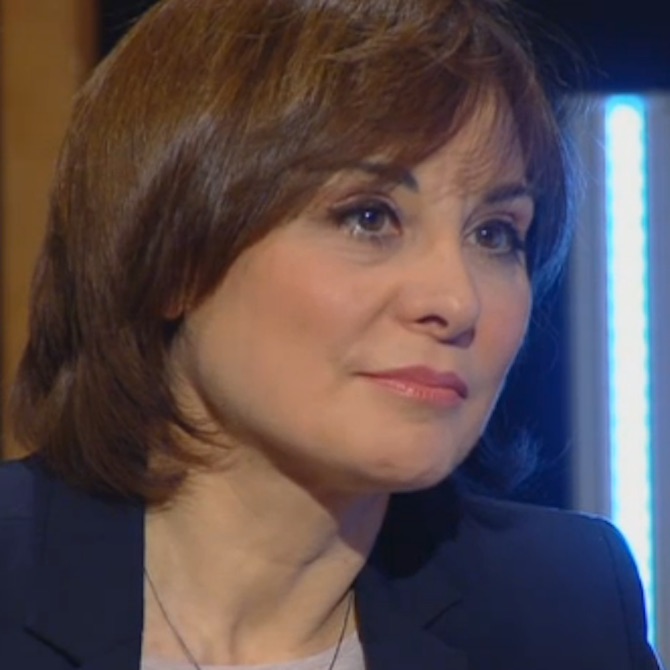Search
To search for an exact match, type the word or phrase you want in quotation marks.
A*DESK has been offering since 2002 contents about criticism and contemporary art. A*DESK has become consolidated thanks to all those who have believed in the project, all those who have followed us, debating, participating and collaborating. Many people have collaborated with A*DESK, and continue to do so. Their efforts, knowledge and belief in the project are what make it grow internationally. At A*DESK we have also generated work for over one hundred professionals in culture, from small collaborations with reviews and classes, to more prolonged and intense collaborations.
At A*DESK we believe in the need for free and universal access to culture and knowledge. We want to carry on being independent, remaining open to more ideas and opinions. If you believe in A*DESK, we need your backing to be able to continue. You can now participate in the project by supporting it. You can choose how much you want to contribute to the project.
You can decide how much you want to bring to the project.

One of the first gestures that Elvira Dyangani Ose made after being appointed director of MACBA was to erase the chronology that introduced the previous exhibition of the museum’s collection, a deterministic chronology that emphasized a rigid and compartmentalized vision of the collection. The new presentation, entitled Preludio. Intención poética (Prelude: Poetic Intention) is the opposite, understanding as it does that collections evolve in an organic way, that art works are not isolated entities but instead are related to and complement each other, generating new readings. For this reason, the current presentation will undergo certain modifications and will be adding and changing work in the coming months.
Poetic Intention, a quote from the poet Édouard Glissant in which “the poem must never deny the world’s intention,” could well be replaced by “Poetic Justice”, because one of the great achievements of the current exhibition is that it puts artists in the center, gives them space, gives them wings, focuses on new acquisitions and includes works on loan that contribute to creating a richer and more open reading. In this way, new dialogues are established with works that have long been part of the collection. There are no overly theoretical texts that guide the exhibition tour but rather notes that point out certain keys based on three areas emphasizing sound, time, museum time, the way in which we move through the spaces, the narrations, language and poetry as a way of verbalizing and relating to the world and, finally, the museum as a result of modern ideas and, therefore, heir to all their contradictions, but also a proactive space open to alternative proposals of possible futures.
The emphasis on collectivity announced in the current direction of the museum is evidenced in its collective curatorship, led by Elvira Dyangani Ose with Antònia Maria Perelló, Claudia Segura and Patricia Sorroche. This presentation is the road map of what is proposed in the museum for the coming years and this declaration of principles is solidified in certain details and gestures, the most significant being the wall that Luz Broto will be building during museum hours until the end of 2024 and which over time will join columns and completely change the access inside the museum. Another gesture is the use of rigid spaces in MACBA in other ways, such as in the work Updated (1997) by Pep Duran, which is installed in a new layout and allows us to walk through it in the middle of one of the corridors and in direct dialogue with the permanent installation of Tàpies.
The design of the exhibition contributes to facilitating the dialogue and transition between works, especially in the second area, focused on language and our relationship with the world, a complex and surprising arrangement that begins with a series of artist books (yes, finally, museum, documentation center and public programs are all on the same page) that explore the world, the planets, our environment and how we inhabit it. We find the beauty of destruction in the video Helicon by Fito Conesa that establishes a surprising, accurate dialogue with Antoni Llena, and as a climax the wonderful encounter (why did nobody think of it before?) between choreographies in front of monochrome works by Bernat Daviu, the colored vitrines of CMYK by Ignasi Aballí and illustrations of planets and scientific knowledge transformed into shapes and colors by Regina Giménez.
Just as it is important to contextualize art work to better understand it and know how it relates to its moment, sometimes it’s important to be able to free it of the burden of its context in order to allow it to make unexpected connections. This exhibition is full of such encounters, such as the journey that goes from the visual scores of Mestres Quadreny to Mona Hatoum, passing through Tres, Mar Arza, Isidoro Valcárcel Medina and Stanley Brouwn; Pep Duran’s drawings in relation to the piece we mentioned before, merging with Richard Artschwanger’s Corner Piece (1992); or the work of Palle Nielsen, Modellen-En modell för ett kvalittativt samhälle (1968), convinced as it is that children’s education of freedom and creativity is the key to a better world, in perfect harmony with Activissimme!! (2011-13) by Ivan Argote, directly inspired by the activity of his father.
The Poetic intention tour is completed with work that underscores the contradictions of the modern movement’s legacy, but also its proposals. This is the case of the mythical onyx wall of the Mies van der Rohe Pavilion in Barcelona transformed by Lúa Coderch into an inflatable to demonstrate its fake reconstruction; the installation Ayuda Humanitaria (Humanitary Aid) (2008-2013) by Núria Güell focusing on blind spots in the system; the B side of the monuments documented in the project Estat Nació – Part. 1… by Daniela Ortiz; the Baharestan Carpet (2014-present) and Iran Galen (2022), as cultural and personal meeting places for Tere Recarens; and I Want a President (1992-2018) by Zoe Leonard. “(…) I want a president with no air conditioning, a president who has stood on line at the clinic, at the DMV, at the welfare office and has been unemployed and laid off and sexually harassed and gaybashed and deported (…).” We fully agree.
[Featured Image: Helicon by Fito Conesa. The rest of the images belong to the exhibition Colección. Preludio. Intención poética (Prelude: Poetic Intention). Photographs: Miquel Coll]

Montse Badia has never liked standing still, so she has always thought about travelling, entering into relation with other contexts, distancing herself, to be able to think more clearly about the world. The critique of art and curating have been a way of putting into practice her conviction about the need for critical thought, for idiosyncrasies and individual stances. How, if not, can we question the standardisation to which we are being subjected?
www.montsebadia.net
"A desk is a dangerous place from which to watch the world" (John Le Carré)